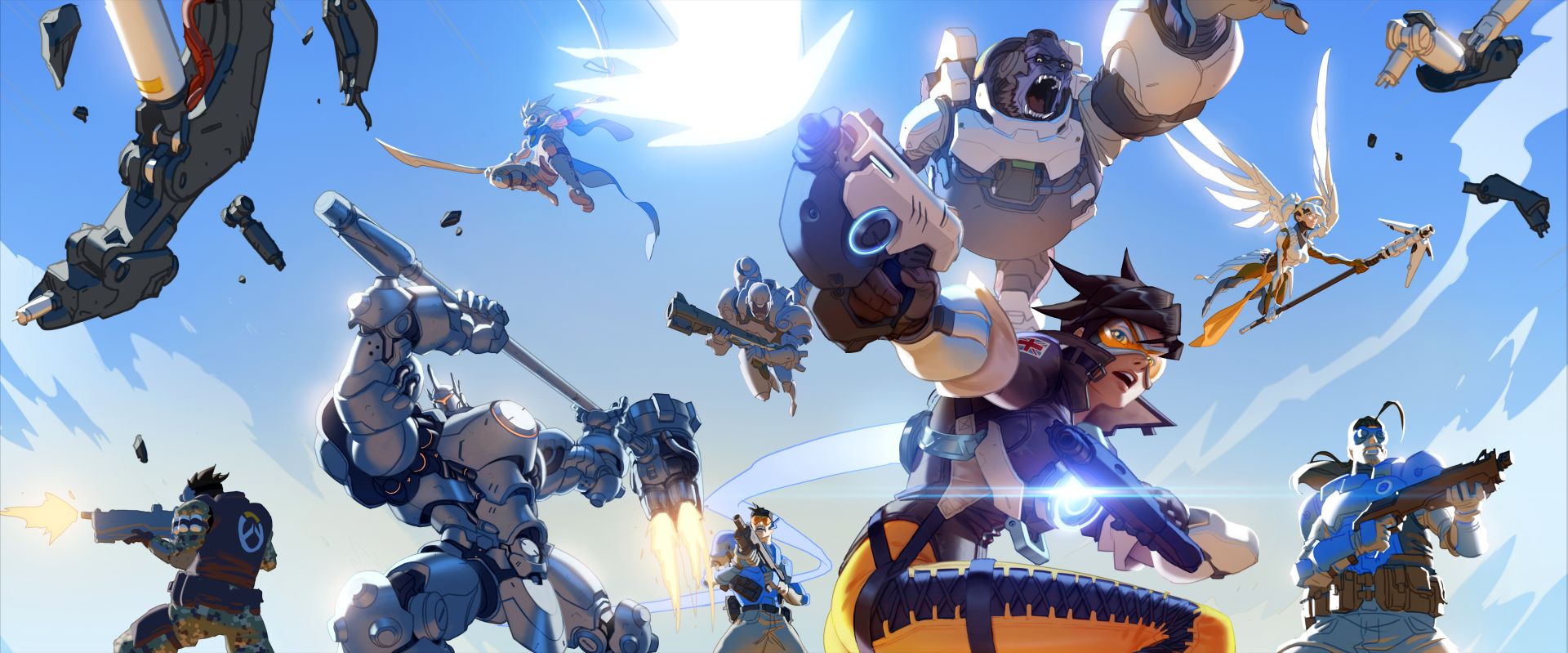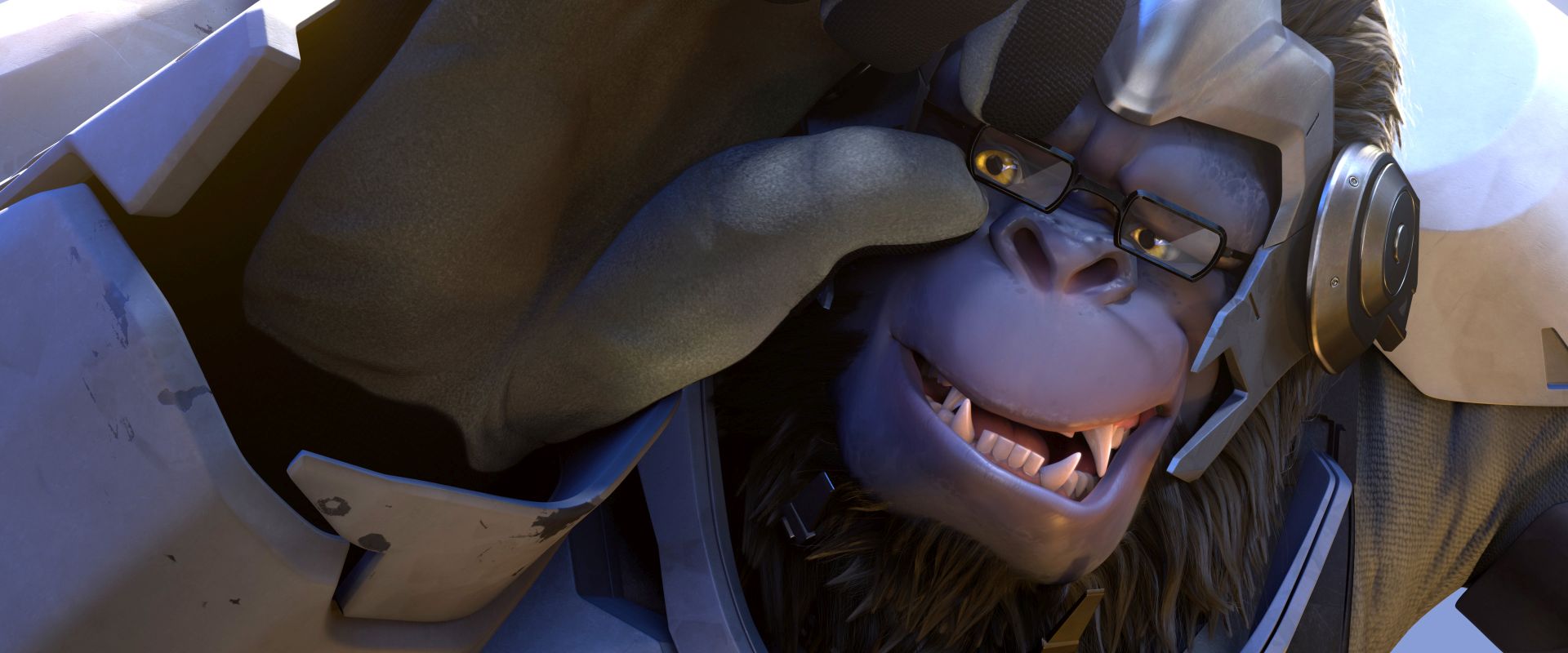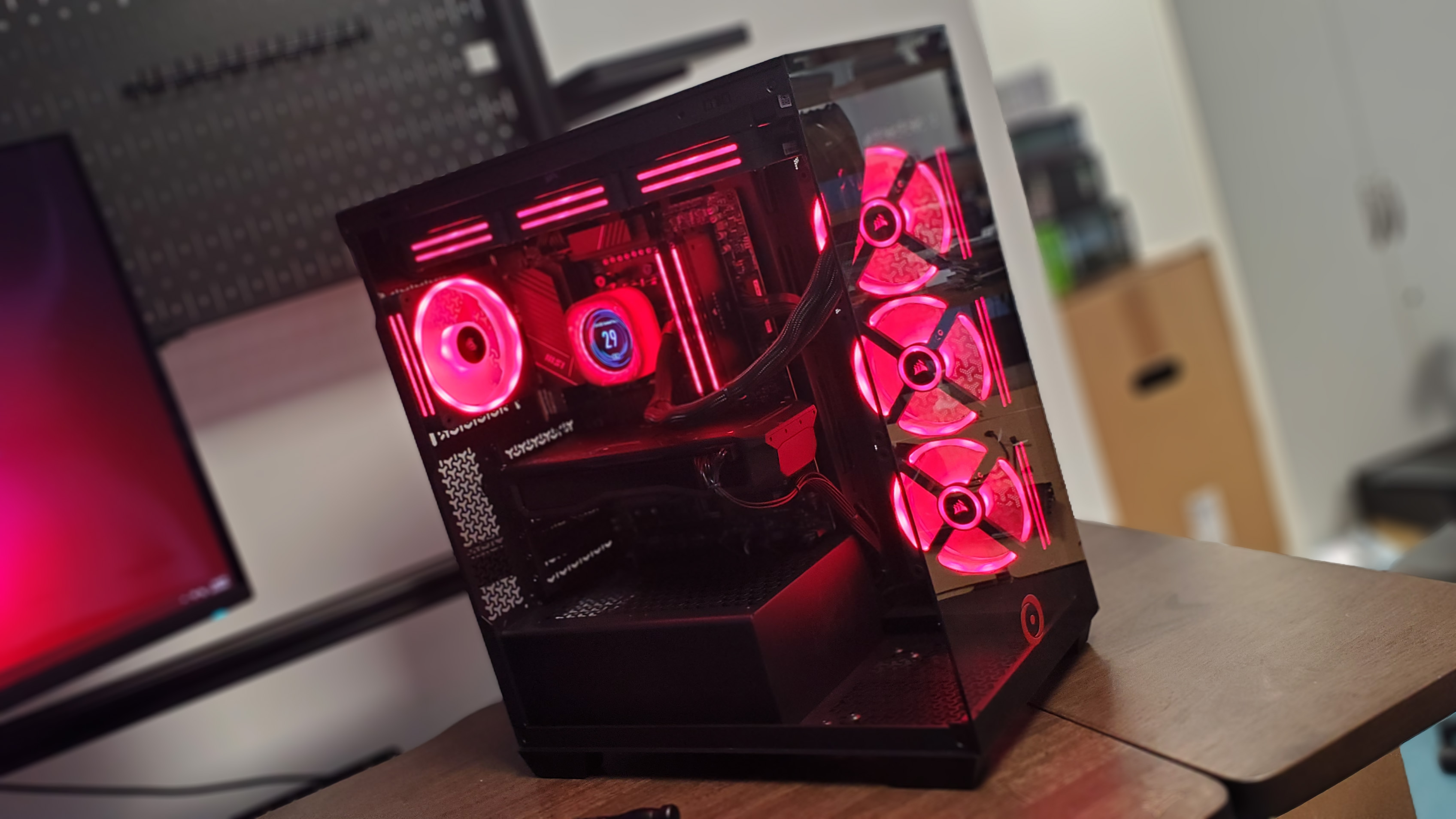Overwatch: hands-on with Blizzard's new shooter

Blizzard don’t just announce games now, they announce universes. Overwatch’s thunderous Blizzcon reveal felt almost ominous, as though Blizzard had opened a portal and summoned forth a monolithic multimedia entertainment kraken, of which the Overwatch team shooter is but one dangling appendage.
As my seat vibrated to the chords of the Avengers-esque orchestral theme, I felt as though I was at the epicentre of something huge and scary, something that would first consume a generation of kids yet to be wowed by Marvel’s PG-13 constellation of superhero movies before moving on to their mums and dads, and then me. In my mind’s eye I didn’t just see the game, I saw the movies, the comics, the cartoon series and the action figures. I’m sure I detected a maniacal edge to senior VP Chris Metzen’s response when asked about such. “I tell ya, I want it all,” he said.
It all started with an ape. The ape is important. Overwatch was introduced with a short film from Blizzard’s exceptional animation team, who have overperformed for years building Blizzard’s in-game cinematics. Wearing its Pixar influences openly, the sketch showed young brothers examining an exhibit devoted to Overwatch—a team of superheroes who once saved Earth from a war between humans and machines. The tour is interrupted when an intelligent armoured ape falls through the glass ceiling, chased by a purple woman with an assault rifle.
The ape is called Winston. He wears glasses and fights with a lightning gun and comes from the moon. He’s also the first of Overwatch’s huge school of playable heroes to be shown to the world. In such an important film, produced with enormous care, it’s a clear statement: yeah we opened with the talking moon ape, we can go anywhere from here. Cowboys, cyborg samurai, a futuristic knight, a flying rocket suit, Overwatch lets you hop from one pop culture archetype to another every round. Each character fights with a unique weapon and a selection of unique skills. It’s dizzying.

Overwatch is set on Earth 60 years in the future, and structured around six vs six battles in which you capture control points or push a bomb down a track in a mode so similar to TF2’s Payload, the cart is actually referred to as ‘the payload’. The attacking team must stand near the cart to drive it, the defending team tries to stop them and run down the clock. The modes, visuals and characters—like the dwarf Torbjorn who can build sentry turrets by hitting them—all invite comparisons to TF2. But while Overwatch’s battles do feel similar, they’re faster, and crazier, thanks largely to the addition of ultimate abilities for each character.
I had a great time with Hanzo. He’s a samurai archer who can fire bolts that reveal enemy locations, ricochet off walls, or spear at great distance. The knight, Reinhardt, was pushing a chokepoint with his shield wall as his team cowered behind him and took potshots through the glowing holographic cover. I took a narrow flanking path, dispatched the enemy team’s Hanzo with a headshot, then fired my ultimate through a pagoda into the group’s exposed side. Hanzo’s ultimate is the most spectacular in the game at the moment. He notches an arrow, draws, screams an echoing Japanese war cry and then fires three dragons across the map. I killed enough enemies to be featured in the play-of-the-game video at the round’s conclusion, which shows everyone the game’s most impressive kill-streak from the killer’s perspective—a very neat touch.
He screams an echoing war cry and then fires three dragons across the map.
The sudden exchange of multiple ultimates creates crunch moments that remind me of Dota 2 team fights. Reinhardt’s ultimate sees him slam his hammer into the ground to create a shockwave that immobilises those in range. It’s the perfect initiation skill. Reaper can teleport and cause close-range damage with dual shotguns. When he activates his ultimate, the Death Blossom, he spins and unleashes a hail of bullets in all directions, nuking anyone who can’t escape. An organised squad can combine the two to wipe out an enemy team in seconds.
The biggest gaming news, reviews and hardware deals
Keep up to date with the most important stories and the best deals, as picked by the PC Gamer team.

Principle designer Scott Mercer seems surprised when I put the Dota comparison to him. “It wasn’t just Dota or any of the MOBAs. You see those kinds of abilities in fighting games as well. You play, you build up a meter, all of a sudden you unleash something really amazing.” The beat-’em-up comparison makes sense as soon as Mercer mentions it. Overwatch’s character select screen lets you flick between characters on a horizontal bar: each spawns on screen and strikes a heroic pose that wouldn’t look amiss on the screen of an arcade machine. There’s something Street Fighter about the way the earthbound maps cobble national stereotypes into collages of real-world locations. I fought on a sandy Egyptian map adorned with hieroglyphs, packed with Anubis statues and located in the shadow of a looming Sphinx. The map set in Japan is full of cherry blossom and temples. The London map has you pushing a payload past a clocktower that looks a lot like Big Ben. I sniped enemies from the roof of a big red London bus. It’s cheesy and lighthearted. It took me a few minutes to realise the bus hovered on jets where the wheels should be.
The fighters even have combos. Tracer is a lithe, chatty cockney who can teleport short distances and rewind her personal time-stream to escape tricky situations. Her ultimate is a stickybomb that causes huge damage. In a video introducing the character, Blizzard showed how she could blink three times in quick succession to get from a ledge to the payload, attach a bomb, and then rewind time to zip back up to the ledge a split second before detonation. This won an admiring “ooooh” from the audience.
Overwatch is very watchable, and Blizzard know it. They rounded off the Blizzcon panel with a match shoutcasted by a couple of the game’s programmers, which inspired cheers from a crowd that had no idea the game existed 30 minutes earlier. That’s largely thanks to the ferocity of Overwatch’s ability effects: it’s hard not to wince when Reinhardt the knight charges across the map, grabs an enemy and crushes them against the wall in one movement. It’s also because commentary helps viewers parse the supernova of ability effects erupting all over the map. Overwatch’s complexity and long-term depth come from the thousands of ways all those hero abilities can interact, but this can be dazzling when you’re thrust into combat. It’s something Blizzard are looking at carefully.
Part of the UK team, Tom was with PC Gamer at the very beginning of the website's launch—first as a news writer, and then as online editor until his departure in 2020. His specialties are strategy games, action RPGs, hack ‘n slash games, digital card games… basically anything that he can fit on a hard drive. His final boss form is Deckard Cain.


